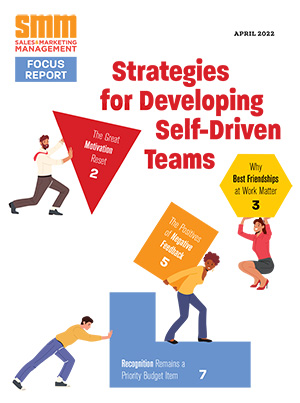Companies are innovating and pushing new offerings to market faster than ever before. In this lightspeed market, it’s easy for a company’s brand to lag behind. The result? A drop in sales, competition encroachment, eroded market position and stalled momentum. Meet the brand evolution gap.
The brand evolution gap is when a company’s offerings continue to evolve, but the company’s brand image, messaging and visual identity lag behind. The faster a company grows, pivots or accelerates into new markets, the more a company’s branding has to keep pace. When a company’s branding does not keep pace, it creates a disconnect that can decrease buyer confidence.
What Contributes to the Brand Evolution Gap?
The brand evolution gap may develop over time as a result of multiple factors. Some of the most common include:
Rapid, unstructured growth – A company’s rapid growth can quickly lead to an outdated brand. In other words, a company may grow faster than the brand strategy.
Lean marketing teams – A small, lean marketing team may rely on informal branding practices that do not include processes to evolve with the direction of the company.
Internal focus – As businesses scale, a laser focus on operational and product development may cause branding to become an afterthought. A company’s identity then becomes defined by internal operations rather than a cohesive external narrative.
Sales misalignment – As a company grows, there is an increased risk for sales and marketing to be siloed. Sales may be presenting one message and marketing an entirely different message.
Lack of differentiation – In a crowded market, a brand can be seen as “bland” or “outdated” if it doesn’t have a distinct value proposition that keeps up with the times.
Shifting target audience – Over time, the target audience can shift from a small, niche group to a broader, more diverse market as the brand grows. If the brand doesn’t evolve, it can confuse new customers, alienate existing customers, or fail to differentiate the company from competitors.
How to Close the Gap
If you find that you are facing the brand evolution gap, follow the roadmap below to steer your marketing and sales teams back on track.
Perform a gap analysis based on stakeholder and market research.
Do a deep-dive audit starting with your current brand assets, messaging and market perception. Clarify your business vision, mission and strategic goals. Next, gather insights from your team, customers and partners to understand what your brand means today and what it should mean tomorrow. Don’t assume you know your true differentiators. Engage a third party to interview your staff, customers, even your prospects. Their words will reveal angles you would’ve missed. Then you will be able to identify exactly where your brand and business are out of sync, so you know what needs to change.
Do a brand messaging refresh.
Based on the research conducted, it is time to redefine your brand’s purpose, positioning and value proposition to match your evolved business. Update messaging frameworks to ensure every audience (customers, employees, investors) hears a clear, compelling story. In order to be effective, rebranding needs to be based on a strategy derived from data and knowledge. These are not feelings-based decisions.
Do a visual identity refresh.
Whether it’s a subtle refresh or a full redesign, update your visual assets to reflect your brand’s new direction and desired market position. Create new brand guidelines to ensure consistency across all channels.
Launch an internal rollout.
A successful rebrand starts from within. Build a change management plan, communication plan, and training toolkits to engage and align your marketing and sales teams around the new brand.
Launch externally and go to market.
Coordinated a brand relaunch including your website, social channels, advertising, public relations and sales strategy so the market sees and feels your transformation.
Your brand should be a catalyst for growth, not a constraint. If you suspect your brand is holding your business back, now is the time to act. Strategic rebranding isn’t just a marketing exercise. It’s a business imperative for increasing momentum, attracting new opportunities and protecting your market position.
It also is not a one-time event. Continue to gather honest feedback from stakeholders annually, and be ready to adapt. Do a deep dive every three to five years and you will effectively prevent the brand evolution gap from happening again. By investing in a structured, data-driven realignment, you can ensure your brand accelerates your business today and into the future.





